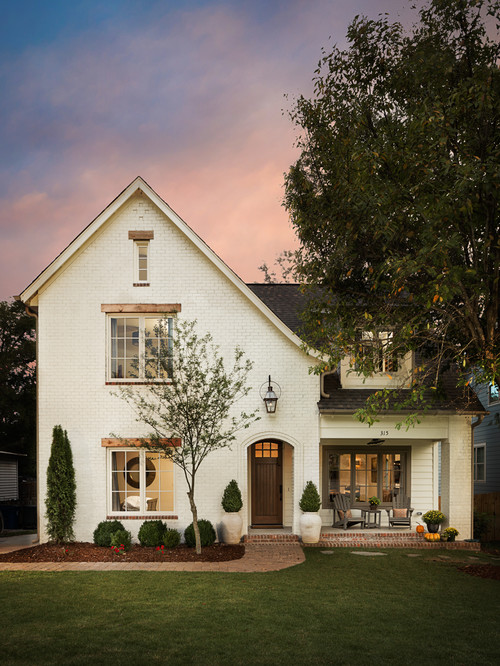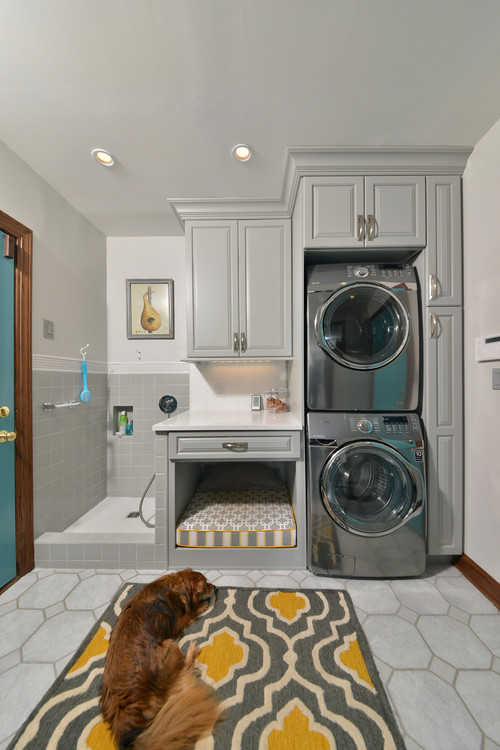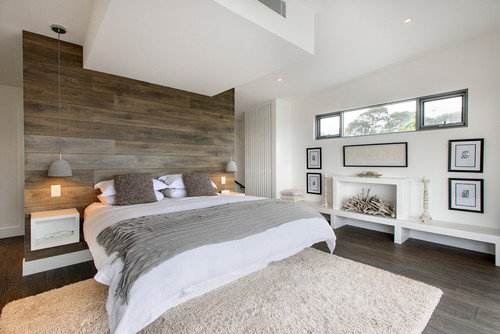In order to make a house more environmentally friendly, you should focus on 4 major items - making the house lower maintenance, more energy efficient, healthier, and have little waste.
Here are a few tips & tricks that can make your home more environmentally friendly and save you money.
 photo courtesy of Trenttsd flickr.com/photos/84335369@N00/3258261439/Lower Maintenance
photo courtesy of Trenttsd flickr.com/photos/84335369@N00/3258261439/Lower Maintenance
Make the exterior of your house masonry instead of a product that will require painting or regular pressure washing. Masonry is lower maintenance and more environmentally friendly, saving you time and money.
Use flooring that does not require refinishing such as linoleum, tile, or concrete.
Select a metal or vinyl alternative fencing instead of wood fencing may need to be replaced every 10 years.
Consider using rubber mulch instead of natural mulch. Rubber mulch costs a bit more up front, but it lasts forever and is made of old tires that would otherwise be in a landfill.
Paying a little more up front for a quality product that will not require as much maintenance may save you money in the long run and will aid you in having a greener home.
More Energy Efficient
Select items for your home that are more energy efficient and use sustainable materials that require less resources in order to have a greener home.
You can get energy efficient windows, add more insulation to your home, use low flow water fixtures, plant trees to shade your home and make it cooler, install skylight tubes to light your home with natural light instead of using electricity, use ceiling fans to lessen the need for air conditioning, power your home with renewable energy (such as solar panels or by using a green energy provider), use Energy Star or other energy efficient appliances, use LED light bulbs instead of standard incandescent, use bamboo or cork flooring that is more renewable than new hardwood flooring, and have a drip sprinkler system that is more efficient than a standard sprinkler system.
When building or remodeling a home, there are many things to consider.
Are your stone countertops being shipped all the way from Asia, thus using a lot of fossil fuels, or are they made with local resources?
Does your irrigation water come from the faucet or is it collected rainwater?
Do you use a top loading washing machine or a front loading washing machine that uses less water and electricity?
Do you really need a large home that requires lots of energy to heat and cool or will a smaller home make you just as happy?
Healthier
Use organic linens, an organic mattress, organic bedding, chemical free rugs, organic cleaning supplies, and no VOC (volatile organic compound) paint in your home to make it more environmentally friendly.
Use a door mat to keep some of the dirt out of your home which will require cleaning less often.
Open your windows on opposite sides of your home to create cross ventilation to let fresh air inside since most homes have a higher air pollution inside than the outside air of most cities.
Add potted plants to the inside of your home to help clean the air.
Photo by Capital Building - Browse bedroom photos
Little Waste
An environmentally friendly home has little waste and recycles as much as possible.
Reuse materials you already have, recycle materials you no longer want, and purchase recycled materials as much as possible.
Refinish your kitchen cabinets instead of buying new.
If you do buy new, donate the old ones or use them in another part of your home (perhaps your garage) instead of throwing them away.
Use reclaimed lumber instead of new.
Use salvaged architectural elements to add character to your home.
Vintage and antique accessories add warmth and individuality to a home without waste.
Other Articles You Might Like.....




